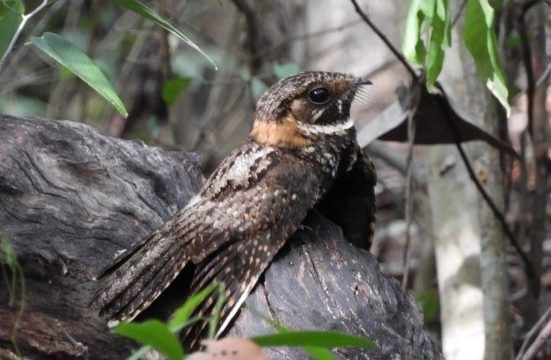Birdfinding.info ⇒ Uncommon across most of its range, but seasonally common in mangroves and swampy woodlands along rivers from October to April. Sites that consistently support high concentrations include Río Lagartos in Yucatán State and New River in Belize. On Cozumel, it can often be found in the abandoned subdivisions on the south side of San Miguel, along the road north of the airport, and along the road to El Cedral.
Yucatán Nightjar
Antrostomus badius
Endemic to the Yucatán Peninsula, where it inhabits deciduous woodlands, mangroves, and freshwater swamps.
Resident nearly throughout the states of Yucatán and Quintana Roo, including Cozumel, as well as eastern Campeche, northern Belize, and likely the northeastern corner of Guatemala.
Some portion of the population migrates or disperses south into Belize and north-coastal Honduras during winter. These movements may be due to a seasonal shift in habitat preference away from dry woodlands and into swamps.
Identification
A medium-large, blackis-brown nightjar with a broad tawny nuchal collar, lores, and vent. The breast and belly are thickly spotted with white.
Male’s undertail is all-white. Seen from above when the tail is spread, the outer tail feathers are all-white.
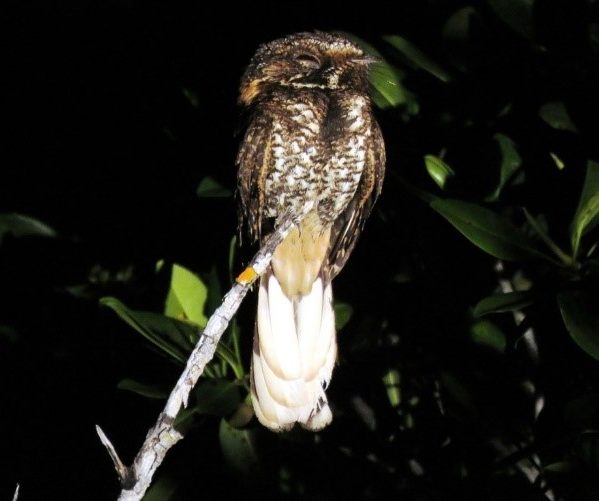
Yucatán Nightjar, male showing all-white undertail and tawny vent. (Río Lagartos, Yucatán, Mexico; January 1, 1980.) © William Ramon Cruz Canto

Yucatán Nightjar, male. (New River, Belize; October 25, 2018.) © Aaron Juan
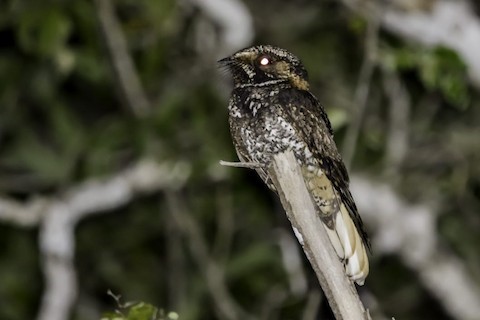
Yucatán Nightjar, male. (New River, Belize; January 18, 2019.) © Roni Martinez
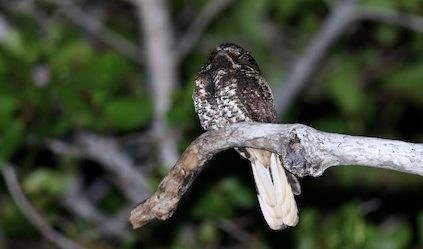
Yucatán Nightjar, male. (Río Lagartos, Yucatán, Mexico; December 20, 2017.) © Jay McGowan

Yucatán Nightjar, male. (Felipe Carillo Puerto, Quintana Roo, Mexico; February 19, 2011.) © Alex Pacheco
Female’s undertail is mostly barred with variably white or buffy tips. Seen from above, the outer tail feathers may or may not show white or buffy corners.
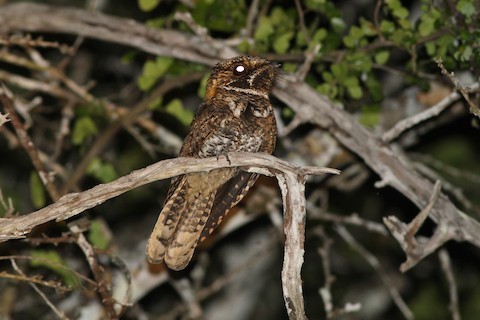
Yucatán Nightjar, female showing barred undertail with buffy tips. (New River, Belize; March 21, 2013.) © Michael O’Brien
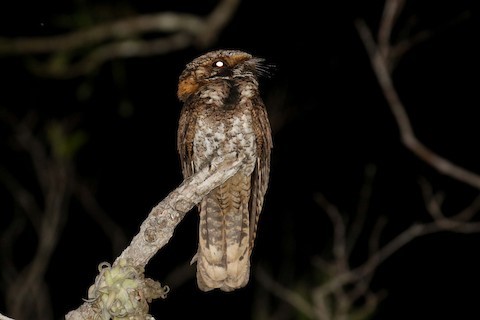
Yucatán Nightjar, female showing barred undertail with buffy tips. (New River, Belize; March 18, 2019.) © Michael O’Brien

Yucatán Nightjar, female with mostly blackish undertail. (Río Lagartos, Yucatán, Mexico; August 26, 2017.) © William Ramon Cruz Canto
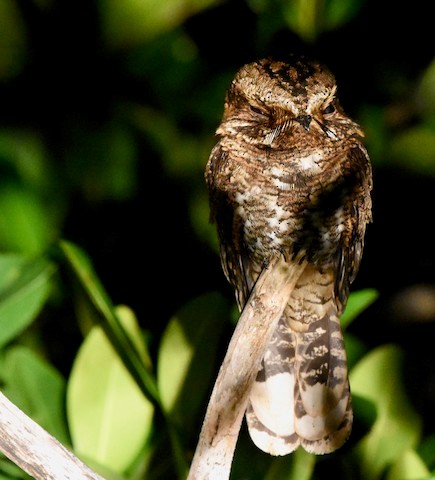
Yucatán Nightjar, female showing extensive whitish undertail tips. (Río Lagartos, Yucatán, Mexico; February 15, 2018.) © Lizabeth Southworth
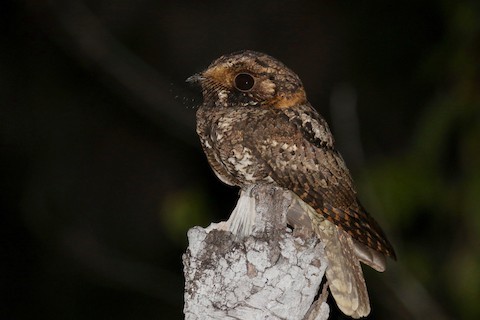
Yucatán Nightjar, female showing barred undertail. (Crooked Tree Wildlife Sanctuary, Belize; March 9, 2017.) © Stephen Gast
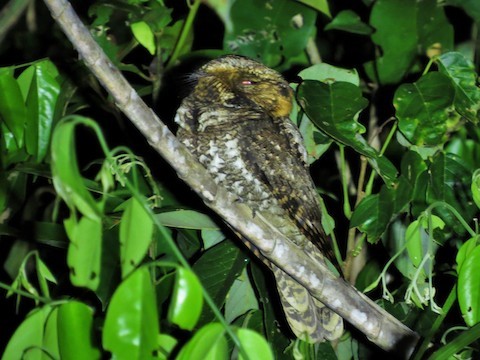
Yucatán Nightjar, female with extensively tawny face and showing barred undertail with very limited buffy tips. (Cuero y Salado Wildlife Refuge, Honduras; February 23, 2017.) © Oliver Komar
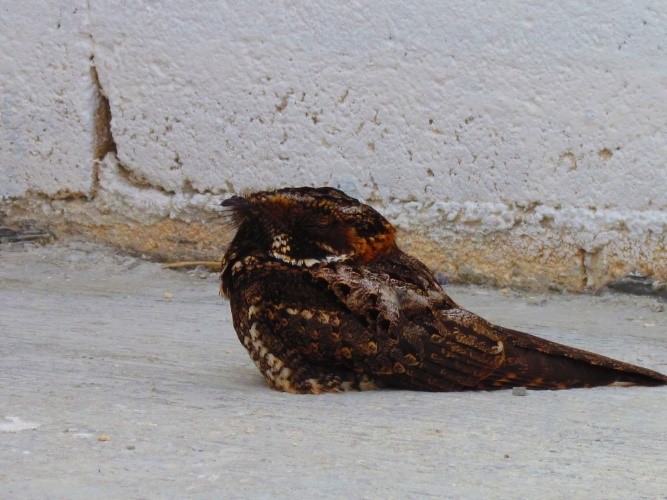
Yucatán Nightjar, out of habitat. (Cancún, Quintana Roo, Mexico; December 27, 2010.) © Alex Pacheco
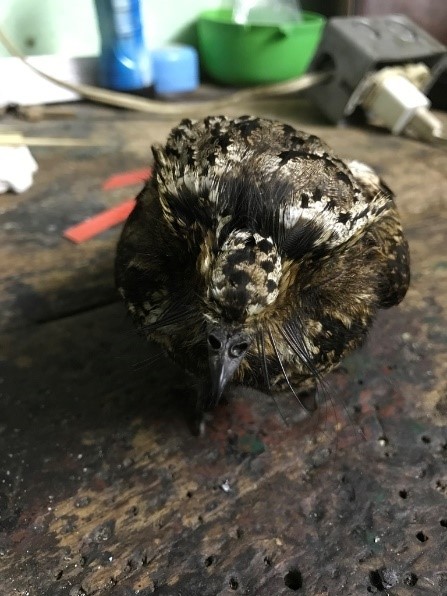
Yucatán Nightjar, close-up of the top of the head, showing large nostril openings. (Mérida, Yucatán, Mexico; April 9, 2019.) © Ricardo Cabrera
Cf. Tawny-collared Nightjar. Tawny-collared and Yucatán Nightjars are very similar in overall appearance, and potentially overlap as wanderers outside their breeding ranges. The males differ in voice and tail patterns, but females may be indistinguishable.
Yucatán Nightjar is typically paler overall and has a brighter, more extensive tawny collar than Tawny-collared. The male Yucatán’s undertail is all-white, whereas on male Tawny-collared the white extends for about 3 to 4 cm from the tip.
Notes
Monotypic species. Formerly considered conspecific with Tawny-collared Nightjar, together known as the Tawny-collared Nightjar (A. salvini), and sometimes additionally including the Silky-tailed Nightjar (A. sericocaudatus).
References
Cleere, N., and D. Nurney. 1998. Nightjars: A Guide to Nightjars and Related Nightbirds. Pica Press, Sussex.
Cleere, N. 2019. Yucatan Nightjar (Antrostomus badius). In Handbook of the Birds of the World Alive (J. del Hoyo, A. Elliott, J. Sargatal, D.A. Christie, and E. de Juana, eds.). Lynx Edicions, Barcelona. https://www.hbw.com/node/55190. (Accessed November 1, 2019.)
eBird. 2019. eBird: An online database of bird distribution and abundance. Cornell Lab of Ornithology, Ithaca, N.Y. http://www.ebird.org. (Accessed November 1, 2019.)
Fagan, J., and O. Komar. 2016. Peterson Field Guide to the Birds of Northern Central America. Houghton Mifflin Harcourt, New York.
Holyoak, D.T. 2001. Nightjars and Their Allies. Oxford University Press.
Howell, S.N.G., and S. Webb. 1995. A Guide to the Birds of Mexico and Northern Central America. Oxford University Press, Oxford.
Schulenberg, T.S., M.d.C. Arizmendi, C.I. Rodríguez-Flores, C.A. Soberanes-González, R.A. Behrstock, and A. Van Tatenhove. 2014. Yucatan Nightjar (Antrostomus badius), version 1.0. In Neotropical Birds Online (T.S. Schulenberg, ed.). Cornell Lab of Ornithology, Ithaca, N.Y. https://doi.org/10.2173/nb.yucnig1.01.
